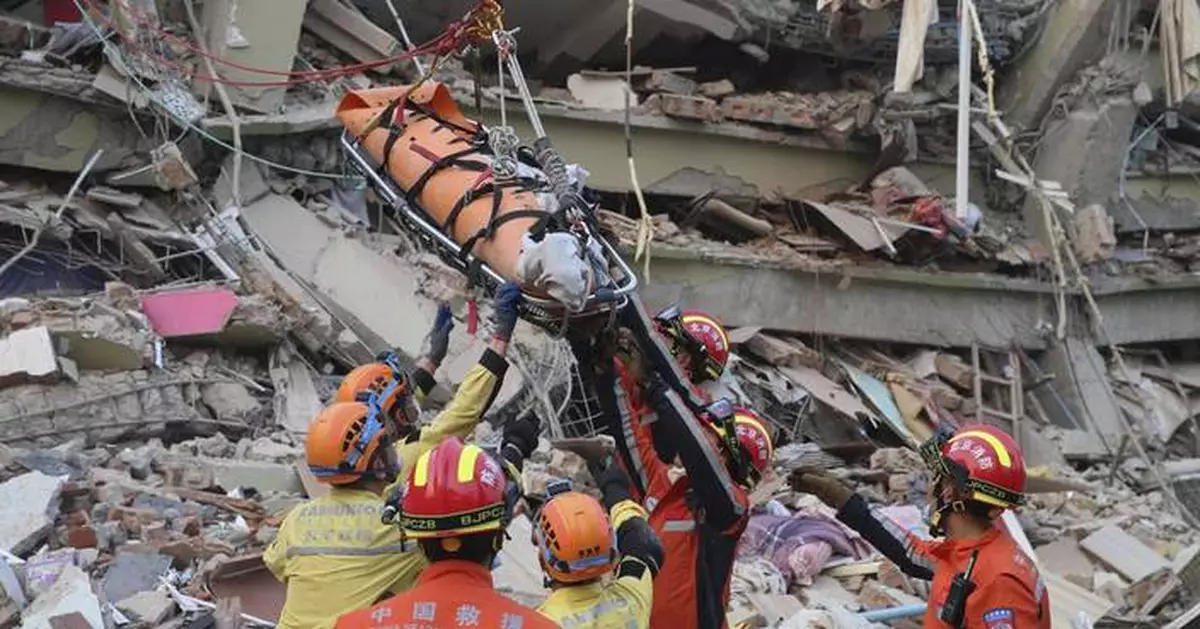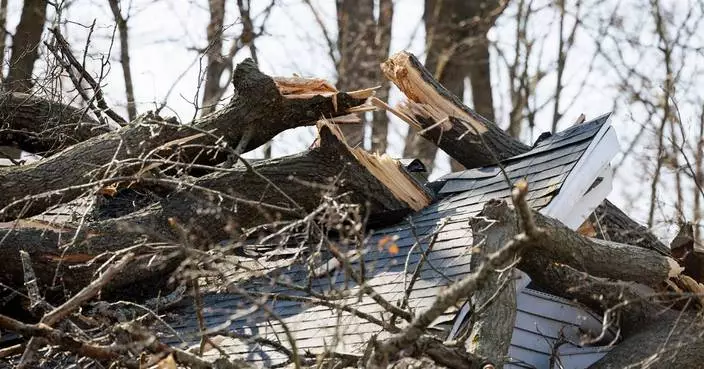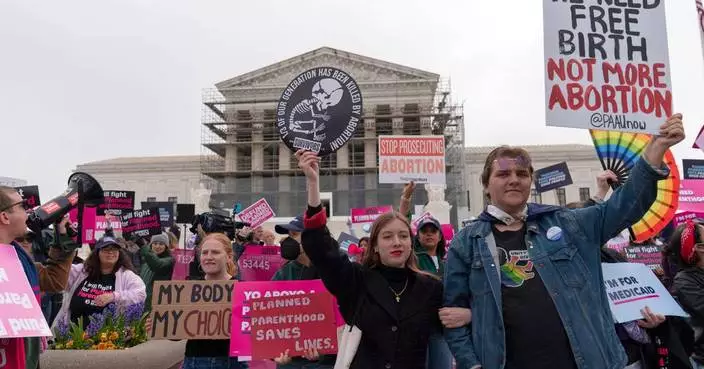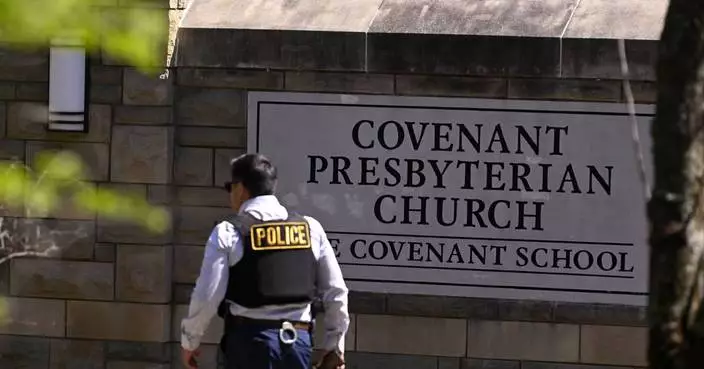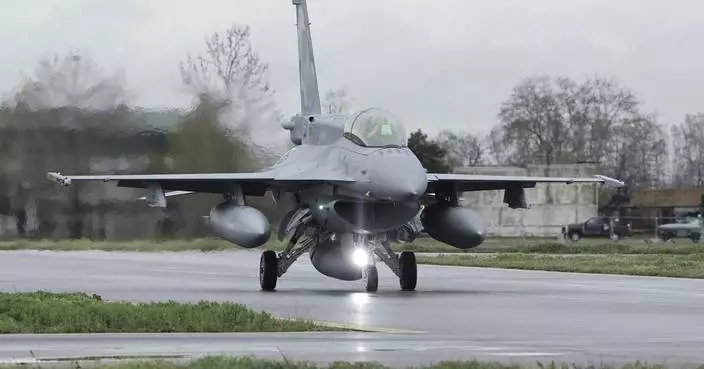NEW YORK (AP) — For those trapped in rubble after an earthquake, survival depends on many factors, including weather and access to water and air.
If their injuries aren't too severe, victims can survive for a week or more, assuming the weather isn't too hot or cold, experts say.
Click to Gallery
A Buddhist monk walks near a collapsed pagoda after an earthquake in Mandalay, central Myanmar, Sunday, March 30, 2025. (AP Photo/Thein Zaw)
In this photo released by Xinhua News Agency, members of a China search and rescue team transfer a survivor from a collapsed Great Wall Hotel in the aftermath of an earthquake in Mandalay, Myanmar, Monday, March 31, 2025. (Cai Yang/Xinhua via AP)
In this image provided by The Myanmar Military True News Information Team, Myanmar's military leader Senior Gen. Min Aung Hlaing, center, inspects victims caused by an earthquake Friday, March 28, 2025, in Naypyitaw, Myanmar. (The Myanmar Military True News Information Team via AP)
In this photo released by Xinhua News Agency, rescuers search for survivors at a collapsed building in the aftermath of an earthquake in Mandalay, Myanmar on Sunday, March 30, 2025. (Cai Yang/Xinhua via AP)
In this photo released by Xinhua News Agency, members of a China search and rescue team transfer a pregnant survivor from a collapsed building in the aftermath of an earthquake in Mandalay, Myanmar, Monday, March 31, 2025. (Myo Kyaw Soe/Xinhua via AP)
Rescue teams in Myanmar and Thailand are searching for survivors after Friday's 7.7 magnitude quake that toppled buildings and damaged roads. The disaster has killed more than 2,000 people in Myanmar and at least 18 in Thailand, mainly at a Bangkok office tower construction site.
Most rescues happen in the 24 hours after a disaster. The chances of survival drop with each day after that, experts say. Most victims are badly injured or buried by falling stones or other debris.
Trapped victims are more likely to survive if they are in a debris-free pocket that prevents major injury while they await rescue, like under a sturdy desk, said geophysicist Victor Tsai from Brown University in an email. Experts call this a survivable void space.
If fire, smoke or hazardous chemicals were released as a result of the building collapse, they may decrease a person's survival odds, said emergency response expert Dr. Joseph Barbera, an associate professor at George Washington University.
Beyond that, having air to breathe and water to drink are crucial as the days go on.
“You could survive a while without food,” Barbera said. “You could survive less without water.”
Temperatures where someone is trapped may affect survival, and temperatures outside the rubble can affect rescue missions.
Power outages and spotty communications have slowed relief operations in Myanmar, where many are searching for survivors by hand in daily temperatures above 40 degrees Celsius (104 Fahrenheit). A lack of heavy machinery has slowed search-and-rescue efforts.
It can be important for survivors to receive vital medical care before they are removed from the rubble, Barbera said. If not, the buildup of toxins from crushed muscles could make them go into shock after they are rescued.
After the 2011 earthquake and tsunami in Japan, a teenager and his 80-year-old grandmother were found alive after nine days trapped in their flattened home. And the year before, a 16-year-old Haitian girl was rescued from earthquake rubble in Port-Au-Prince after 15 days.
The best practices for survival during an earthquake depend on where you are in the world. Building codes in regions with active fault lines are often designed to withstand earthquakes, but that doesn't hold true everywhere.
In many countries, including the United States, the best practices are to drop, seek cover and hang on unless you are close to a building exit. Seek shelter under a heavy table or near sturdy furniture that may yield a survivable pocket if the roof collapses. Cover your face with cloth or a mask to protect from dust and debris.
If you are trapped in the rubble after and earthquake, save your energy and don't overexert. Ration food and water, listen for rescue calls and search for something near you to make noise. If you have a phone with you, conserve its battery and try for help in short spurts each day.
—-
The Associated Press Health and Science Department receives support from the Howard Hughes Medical Institute’s Science and Educational Media Group and the Robert Wood Johnson Foundation. The AP is solely responsible for all content.
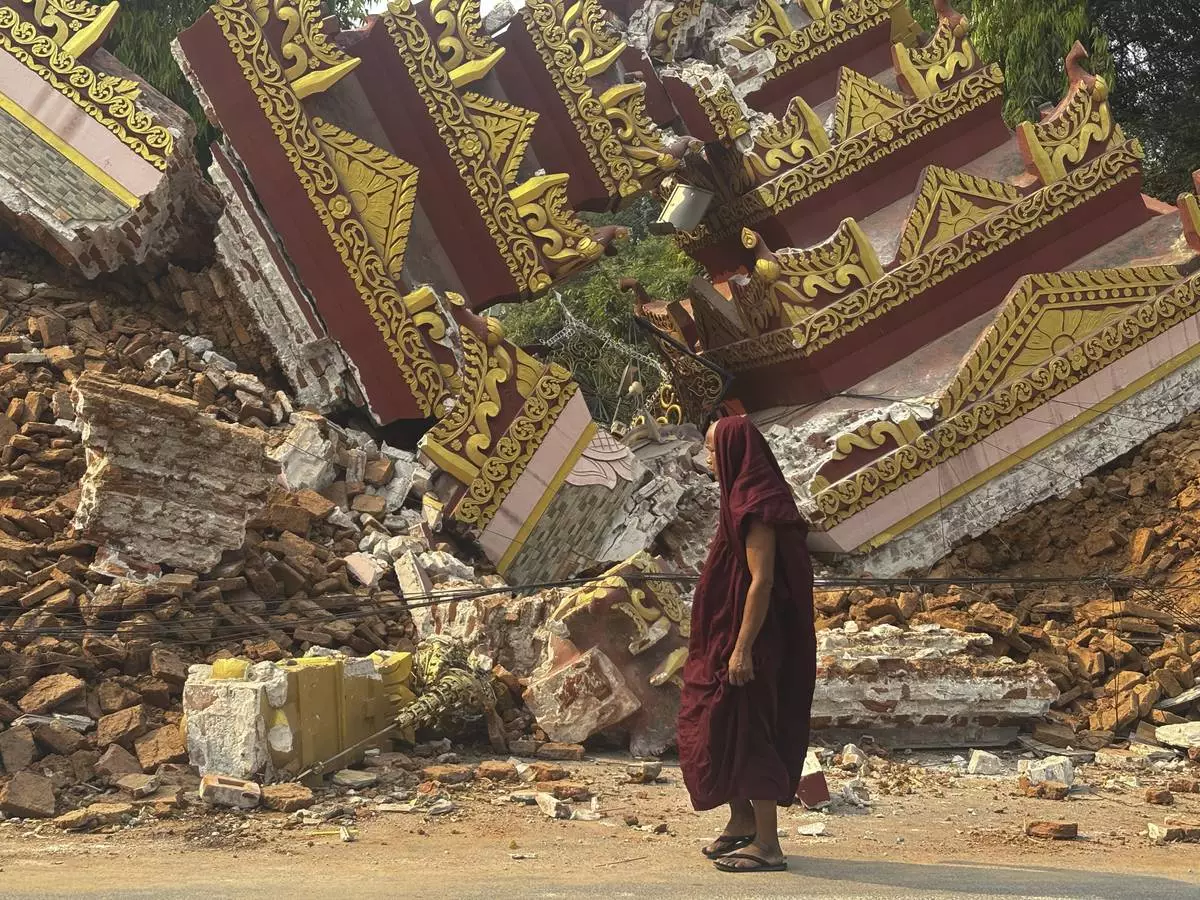
A Buddhist monk walks near a collapsed pagoda after an earthquake in Mandalay, central Myanmar, Sunday, March 30, 2025. (AP Photo/Thein Zaw)
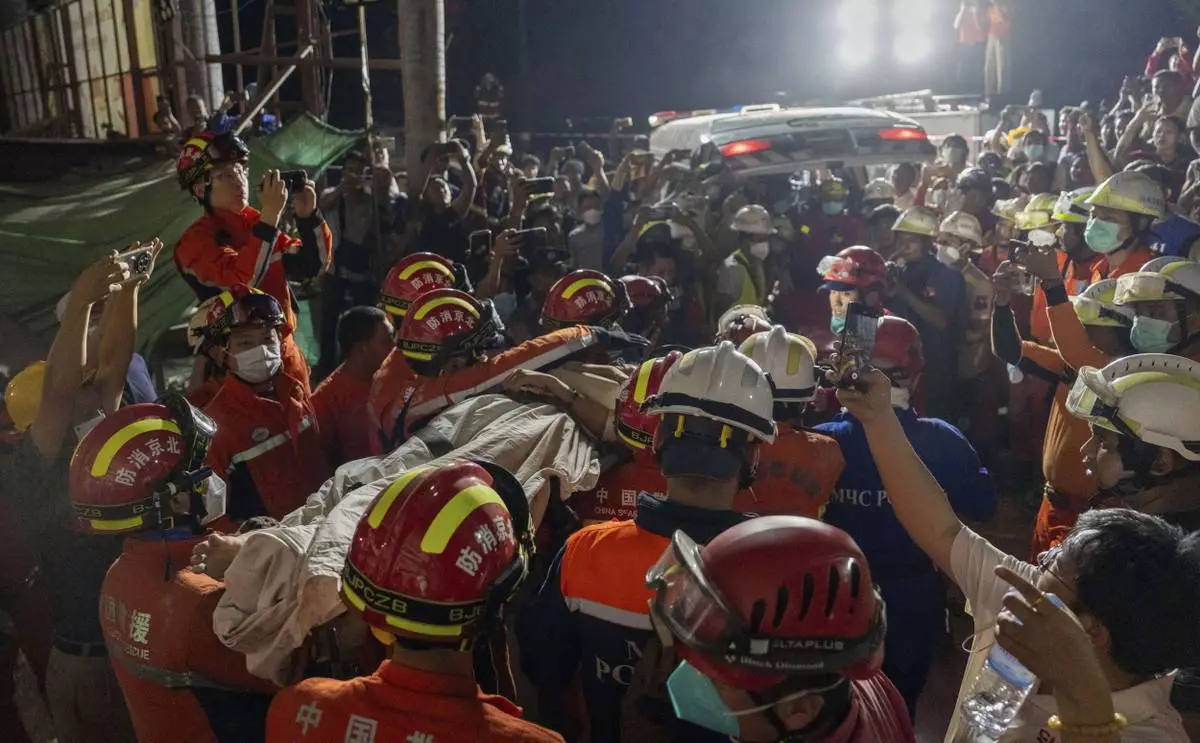
In this photo released by Xinhua News Agency, members of a China search and rescue team transfer a survivor from a collapsed Great Wall Hotel in the aftermath of an earthquake in Mandalay, Myanmar, Monday, March 31, 2025. (Cai Yang/Xinhua via AP)
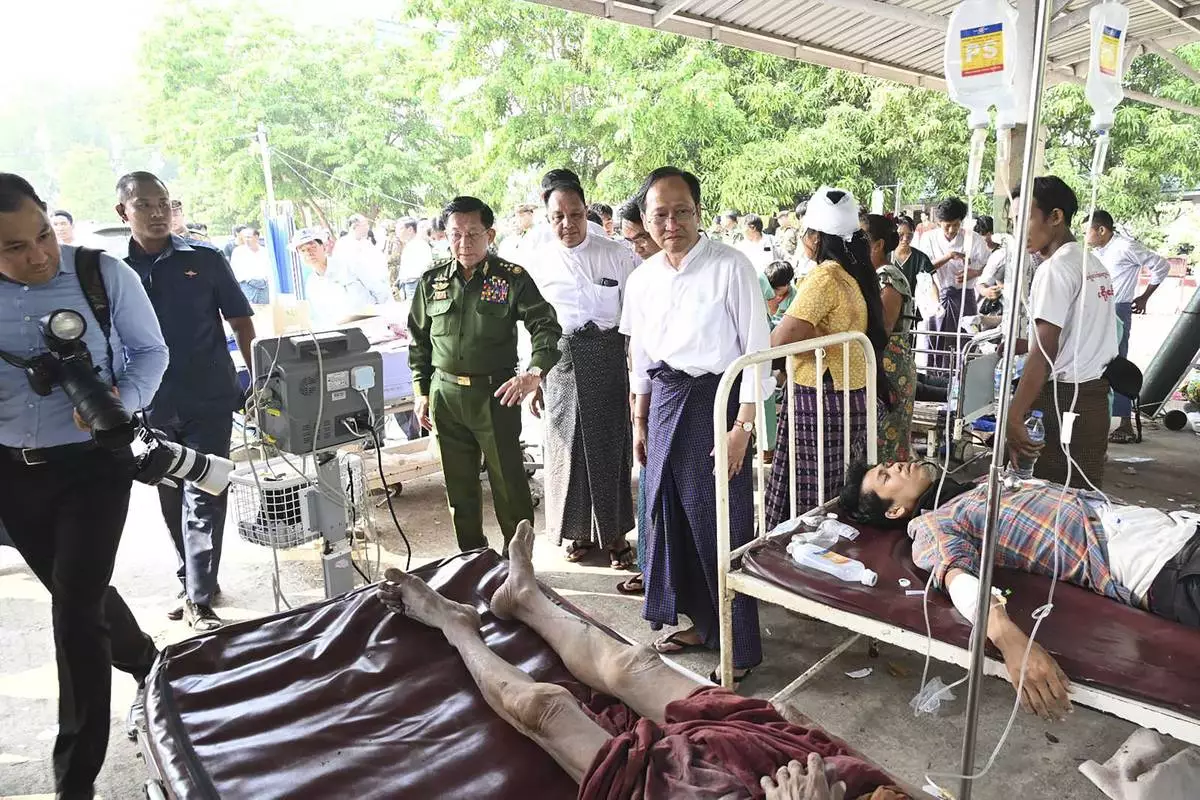
In this image provided by The Myanmar Military True News Information Team, Myanmar's military leader Senior Gen. Min Aung Hlaing, center, inspects victims caused by an earthquake Friday, March 28, 2025, in Naypyitaw, Myanmar. (The Myanmar Military True News Information Team via AP)
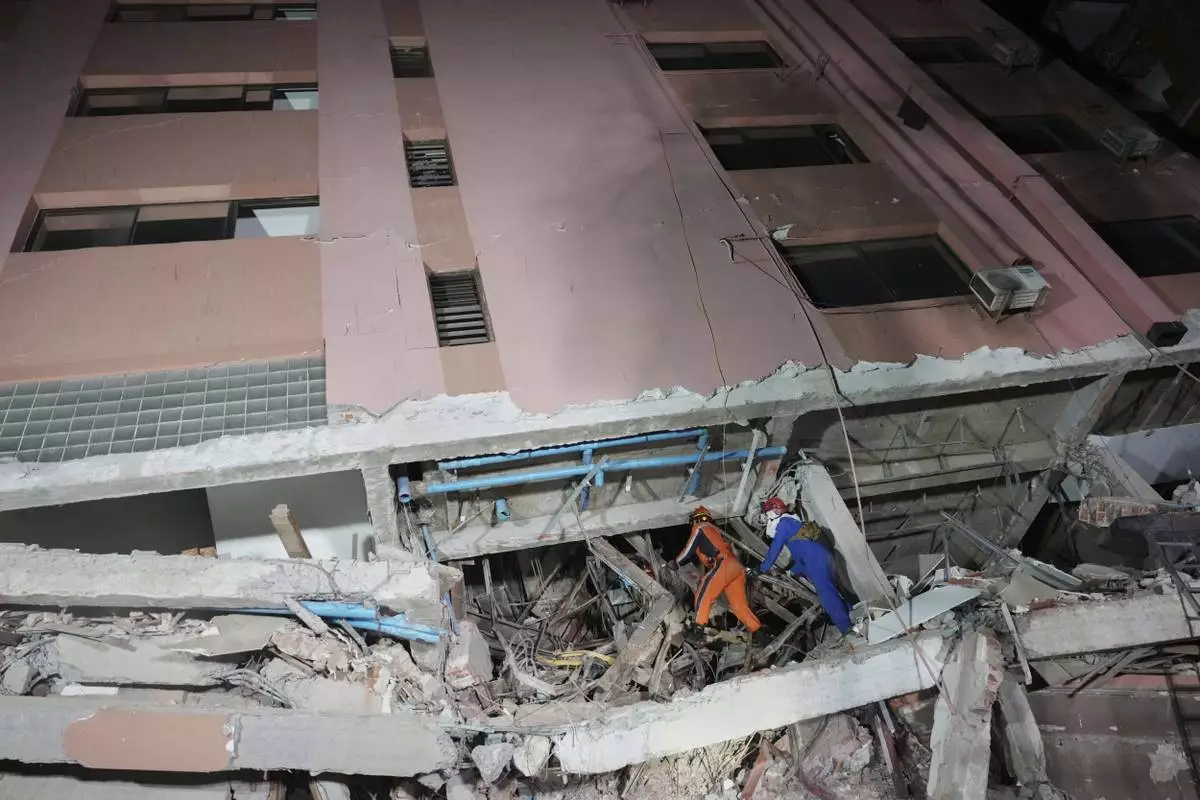
In this photo released by Xinhua News Agency, rescuers search for survivors at a collapsed building in the aftermath of an earthquake in Mandalay, Myanmar on Sunday, March 30, 2025. (Cai Yang/Xinhua via AP)
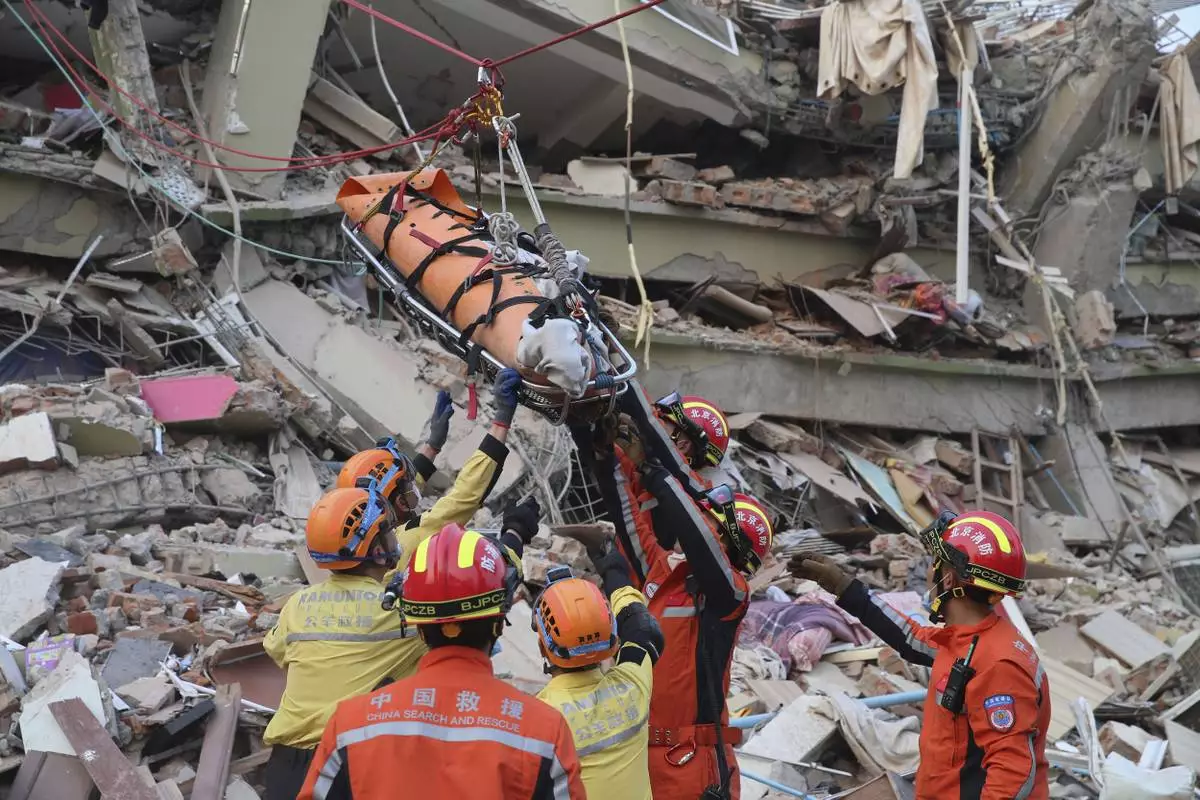
In this photo released by Xinhua News Agency, members of a China search and rescue team transfer a pregnant survivor from a collapsed building in the aftermath of an earthquake in Mandalay, Myanmar, Monday, March 31, 2025. (Myo Kyaw Soe/Xinhua via AP)
PORT-AU-PRINCE, Haiti (AP) — Gunfire erupted as thousands of protesters in Haiti clashed with police on Wednesday as they denounced a surge in gang violence and demanded that the government keep them safe.
At least a dozen heavily armed protesters opened fire on officers who responded outside the offices of the prime minister and the transitional presidential council. An AP journalist at the scene did not see anyone injured or killed.
It is the first major protest to hit the administration of Alix Didier Fils-Aimé, whom the council appointed as prime minister in November.
The whizzing bullets caused the crowd to flee in panic, with shoes, caps and sunglasses left strewn on the street.
The protest began peacefully. Some demonstrators brandished machetes while others clutched tree boughs or waved palm fronds as they weaved through the streets of Port-au-Prince, where schools, banks and other businesses remained closed.
Flaming tires blocked roads as protesters chanted, “Let’s go, let’s go, let’s go and get them out!”
One organizer, who covered his face and declined to give his name for fear of reprisal, said the purpose of the protest was to “take over the prime minister’s office and burn down the CPT,” referring to the offices of Haiti’s transitional presidential council.
Discontent and anger is spreading as gangs that already control 85% of Port-au-Prince pillage once-peaceful communities.
Recent gang violence has forced more than 60,000 people to flee their homes in one month alone, according to the U.N.’s International Organization for Migration.
“We have never observed such large number of people moving in this short time,” said Grégoire Goodstein, the organization’s chief in Haiti.
In a visit to Port-au-Prince in early March, William O’Neill, the U.N. human rights commissioner’s expert on Haiti, described the capital as “an open-air prison.”
“There is no safe way to enter or leave the capital except by helicopter,” he said. “Gangs are invading previously safe neighborhoods, killing, raping and burning houses, businesses, churches and schools.”
Gangs also have pillaged communities beyond Port-au-Prince.
On Monday, they attacked the city of Mirebalais in central Haiti and stormed a prison, releasing more than 500 inmates. The attack on Mirebalais and the nearby town of Saut d'Eau left more than 5,900 people homeless, according to an IOM report released Wednesday.
A recent U.N. report found that more than 4,200 people were reported killed across Haiti from July to February, and another 1,356 were injured.
O’Neill has called on the international community to do more to support a U.N.-backed mission led by Kenyan police that is helping Haitian officers quell gang violence.
However, the mission only has about 40% of the 2,500 personnel envisioned and has struggled to hold back gangs.
Associated Press reporter Dánica Coto in San Juan, Puerto Rico contributed.
Follow AP’s coverage of Latin America and the Caribbean at https://apnews.com/hub/latin-america
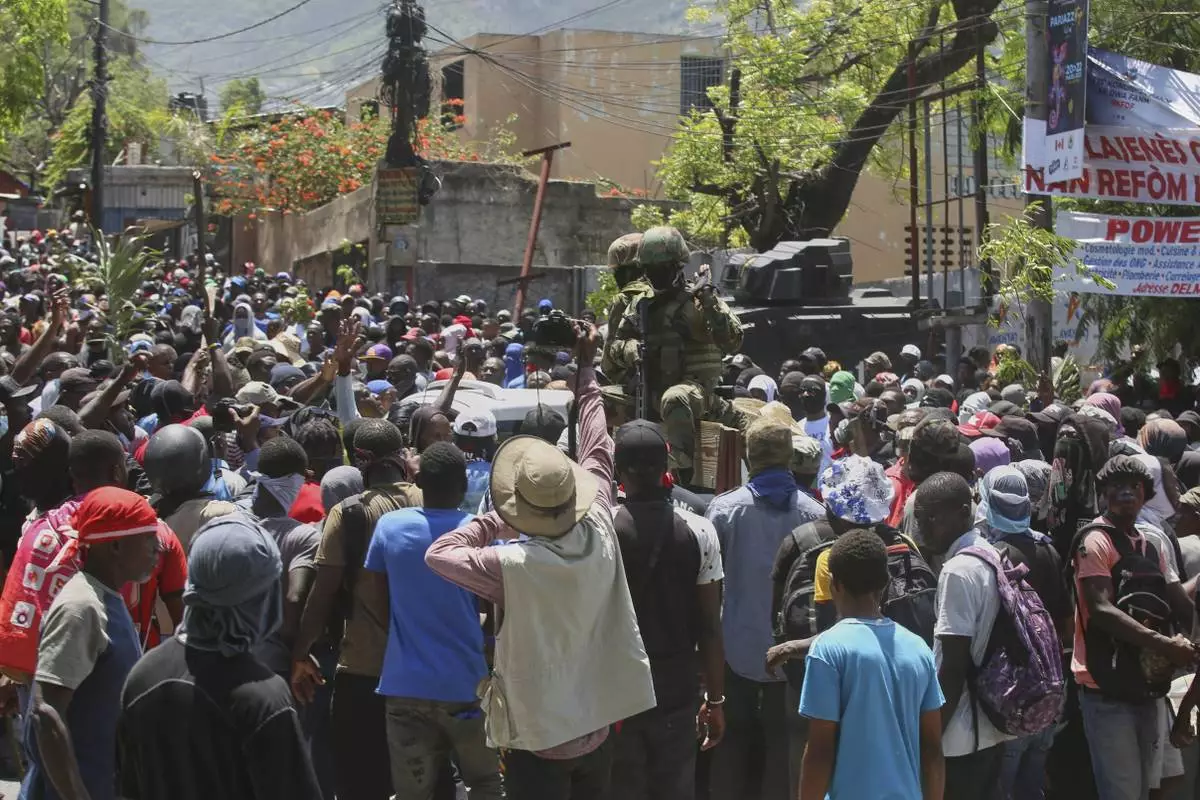
Protesters surround an Army vehicle during a protest against insecurity in Port-au-Prince, Haiti, Wednesday, April 2, 2025. (AP Photo/Odelyn Joseph)
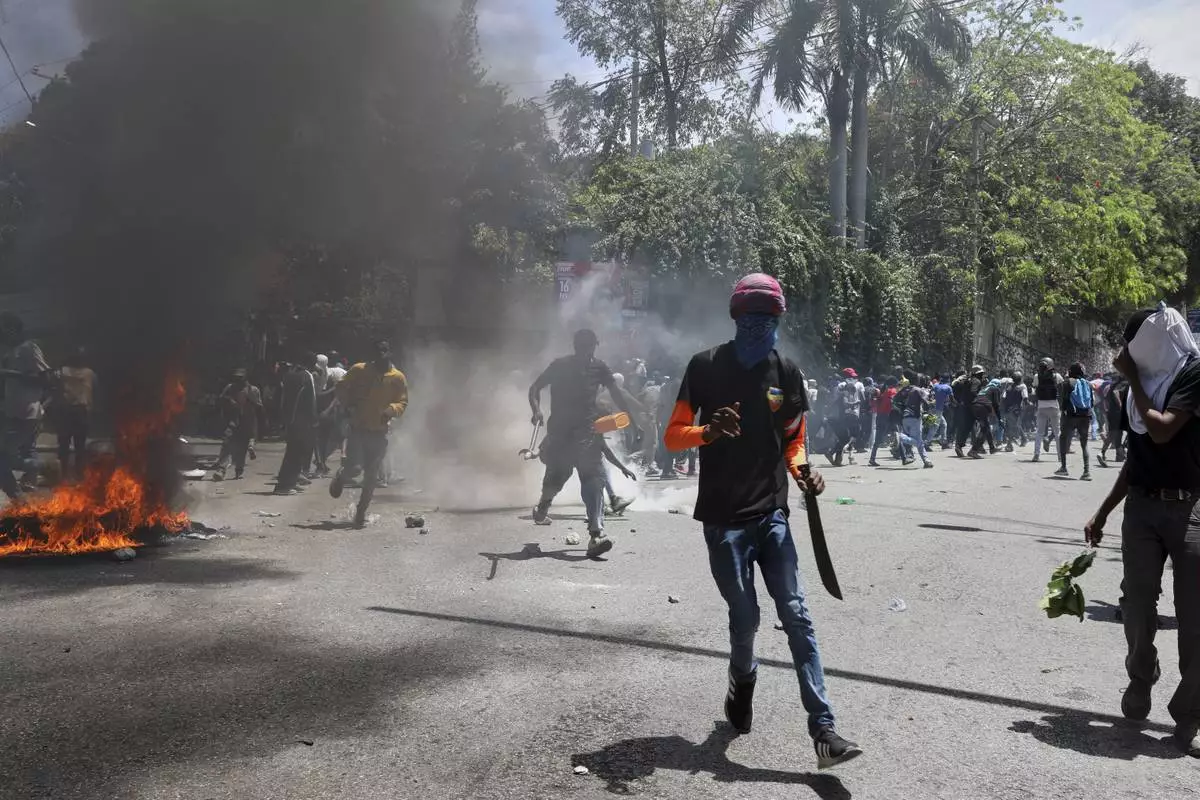
Demonstrators run for cover from tear gas fired by police during a protest against insecurity in Port-au-Prince, Haiti, Wednesday, April 2, 2025. (AP Photo/Odelyn Joseph)
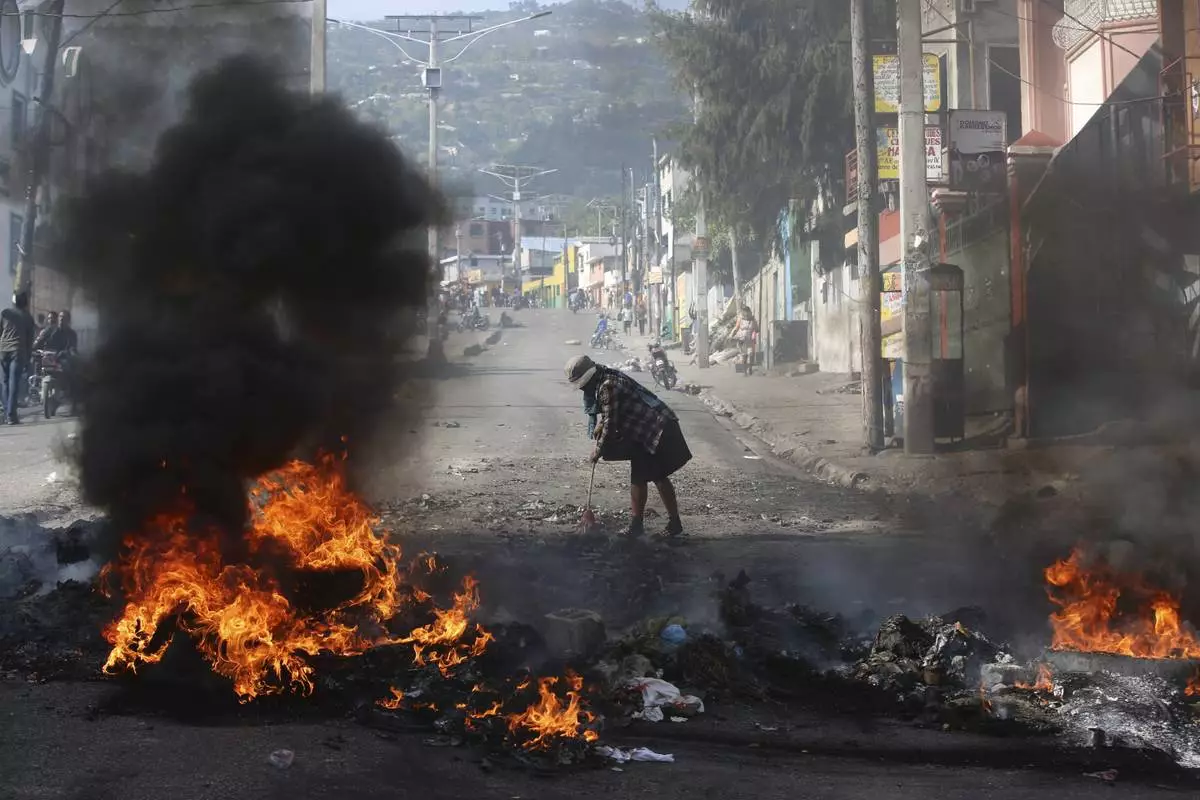
A woman sweeps debris next to a blazing barricade set up by demonstrators during a protest against insecurity in Port-au-Prince, Haiti, Wednesday, April 2, 2025. (AP Photo/Odelyn Joseph)

A motorcyclist rides past a burning car during a protest against insecurity in Port-au-Prince, Haiti, Wednesday, April 2, 2025. (AP Photo/Odelyn Joseph)
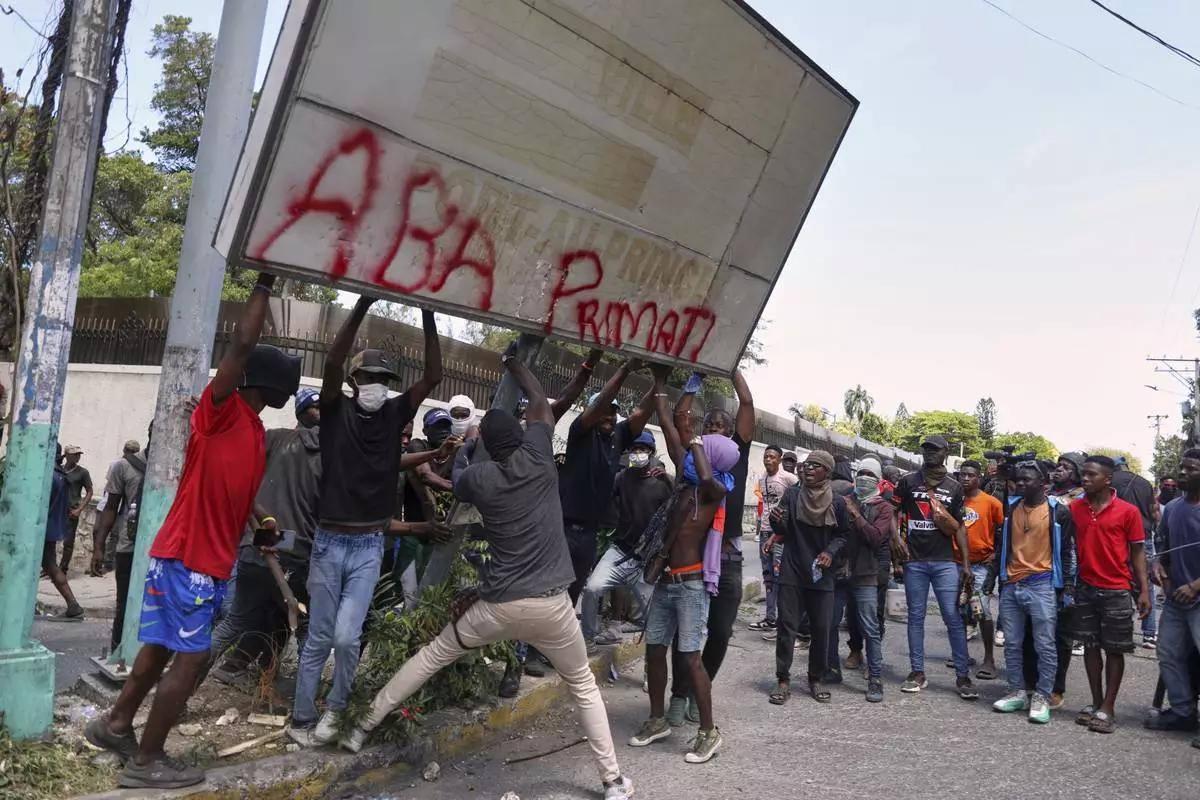
Protesters try to pull down a sign during a protest against insecurity in Port-au-Prince, Haiti, Wednesday, April 2, 2025. (AP Photo/Odelyn Joseph)







